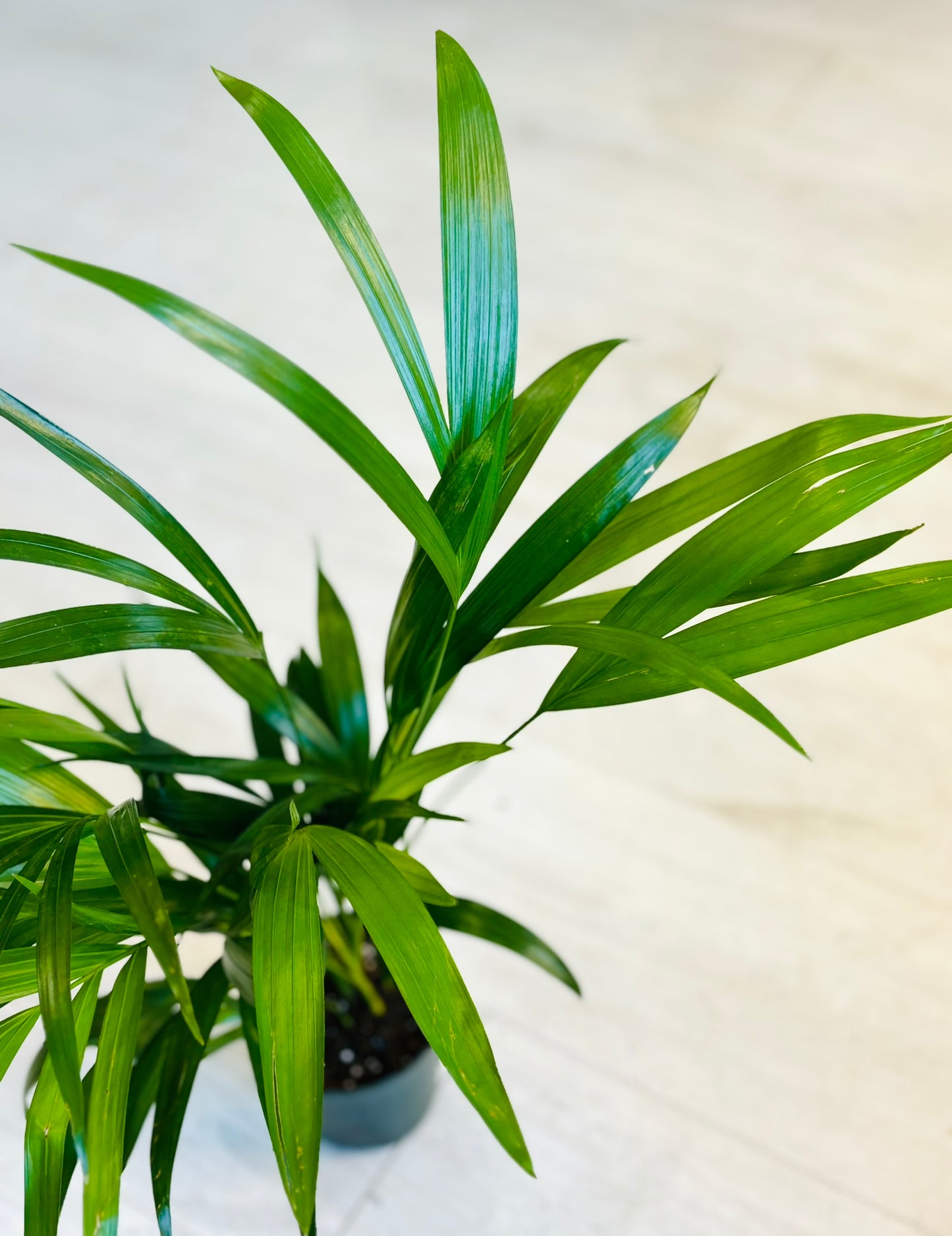SoCal Soul Plants & Gifts
Areca Palm 4"
Areca Palm 4"
Couldn't load pickup availability
Light:
• Bright, Indirect Light: Areca Palms thrive in bright, indirect light. They can tolerate some direct sunlight, but too much can scorch the leaves, while too little light can cause slow growth and yellowing fronds.
• Avoid Low Light: Though they can tolerate low light for short periods, extended exposure to low light will result in leggy growth.
Watering:
• Even Moisture: Keep the soil evenly moist but not soggy. Water when the top 1-2 inches of soil are dry. Inconsistent watering (letting the plant dry out too much or overwatering) can cause leaf tips to brown.
• Reduce Watering in Winter: During the cooler months, when the plant’s growth slows, reduce watering frequency but ensure the plant doesn’t dry out completely.
Humidity:
• Moderate to High Humidity: Areca Palm loves high humidity levels, typically around 50-60%. If the air in your home is dry, particularly in winter, the leaf tips may brown.
• Increase Humidity: Mist the leaves regularly or place the plant near a humidifier or on a pebble tray filled with water to boost humidity.
Temperature:
• Warm Temperatures: Areca Palm thrives in temperatures between 65-75°F. It’s sensitive to cold temperatures and should be kept away from drafts, windows, or areas below 50°F
• Avoid Cold Drafts: Protect your palm from cold drafts from windows, air conditioners, or heaters.
Soil:
• Well-Draining Potting Mix: Use a well-draining potting mix. A standard houseplant mix with added perlite or sand to improve drainage works well for Areca Palm.
• Ensure Proper Drainage: Make sure the pot has drainage holes to prevent water from accumulating at the bottom, which could lead to root rot.
Fertilizing:
• Feed During Growing Season: Fertilize the plant every 2-3 months during spring and summer with a balanced, water-soluble fertilizer to encourage growth.
• Reduce Feeding in Winter: During fall and winter, when the plant’s growth slows, reduce or stop fertilizing.
Pruning:
• Remove Brown or Yellow Leaves: Trim off any dead, yellowing, or brown fronds at the base to keep the plant looking tidy and healthy.
• Avoid Cutting Green Fronds: Avoid cutting green, healthy fronds as this can weaken the plant.
Repotting:
• Repot Every 2-3 Years: Areca Palms are slow-growing and prefer to be slightly root-bound. Repot the plant every 2-3 years, or when it becomes root-bound, in the spring using fresh soil.
• Use a Slightly Larger Pot: When repotting, choose a pot that is slightly larger than the current one, as too much extra space can lead to water retention.
Pests:
• Watch for Common Pests: Areca Palms can sometimes attract pests like spider mites, mealybugs, and scale. Regularly inspect the leaves for signs of pests, and treat with insecticidal soap or neem oil if necessary.
• Keep the Leaves Clean: Wipe the leaves with a damp cloth to remove dust and prevent pest infestations.
Toxicity:
• Non-Toxic: The Areca Palm is non-toxic to pets and humans, making it a great option for households with animals or children.
Common Issues:
• Brown Leaf Tips: This can be caused by overwatering, underwatering, low humidity, or too much direct sunlight. Adjust watering and humidity levels as needed.
• Yellowing Leaves: Yellowing fronds may indicate the plant is either receiving too much water or not enough. Check the soil moisture and adjust watering habits.
Care Instructions
Care Instructions
Delivery only available in IL & MO
Delivery only available in IL & MO
Currently, shipping is only available to Illinois and Missouri addresses.
In-Store Pick Up
In-Store Pick Up
Free in-store pick-up is available during store hours. Orders are ready to go within 24-48 hours after your order is placed.
Additional Info
Additional Info
Each plant is unique; size, coloring, and shape fluctuate so your plant may be slightly different than the one pictured. However, you'll always receive a happy healthy plant hand-picked, and I won't give customers anything I wouldn't take home myself!




